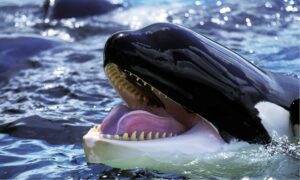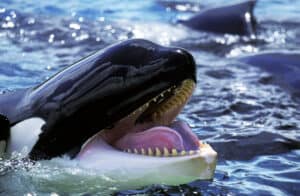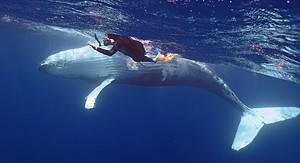Puerto Rico is known for having a lot of beautiful and unique animals, but did you know there are whales in the waters surrounding Puerto Rico? If you’re lucky, you may even catch a glimpse of one, although one specific species is the most common. Follow along to discover the best time to whale watch in Puerto Rico and the types that call the island’s stunning waters home.
When is the Best Time To Whale Watch in Puerto Rico?
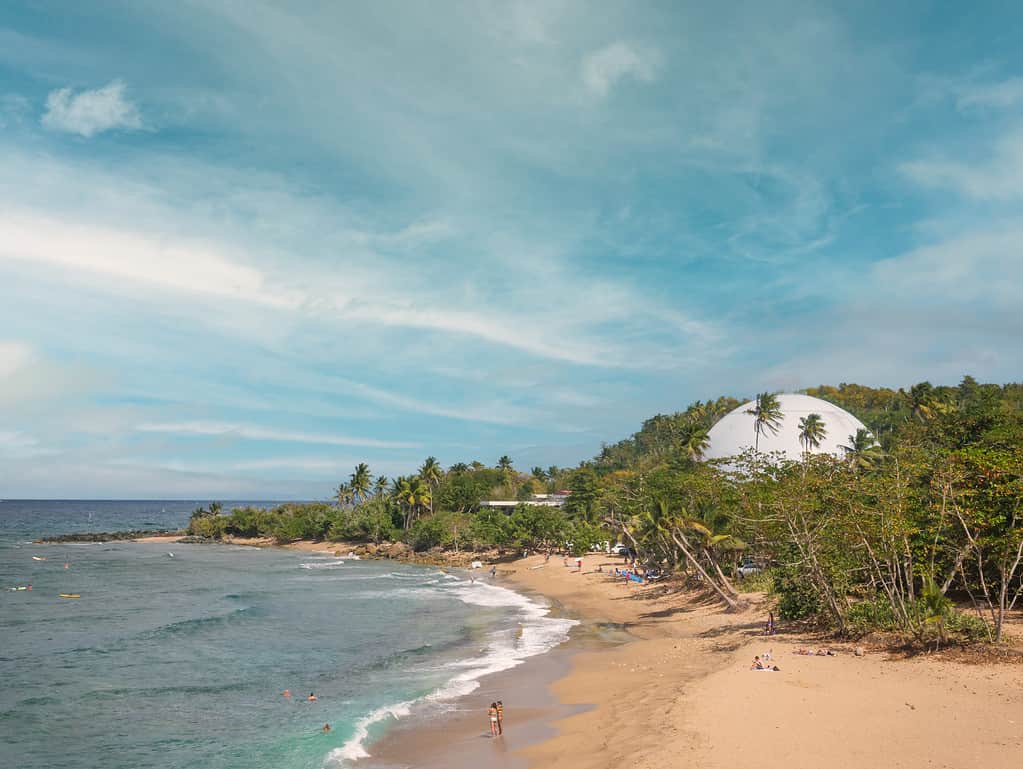
A great place to take a whale-watching tour in Puerto Rico is Rincon.
©Christian Ouellet/iStock via Getty Images
The best time to go whale watching in Puerto Rico is around mid-January to late March, although the peak season is in February. The best spot to see migrating humpback whales is along the western coast of Puerto Rico. You’re never guaranteed to see one of these animals though on a tour. They are wild animals and have a mind of their own, often popping up miles away from the tour guide’s suggestion. Still, one of the best places to see these impressive animals is in Rincon.
4 Whales in Puerto Rico
There aren’t too many whales throughout Puerto Rico. Honestly, most whale species that live and swim off the coast of Puerto Rico are uncommon and rarely seen. For instance, did you know there have been killer whale spottings in the Caribbean? While these massive and lovely creatures live throughout the world, they are mostly found in colder waters, like off the coast of Alaska. So, what are some types of whales that live in Puerto Rico? Keep reading to find out.
Humpback Whales
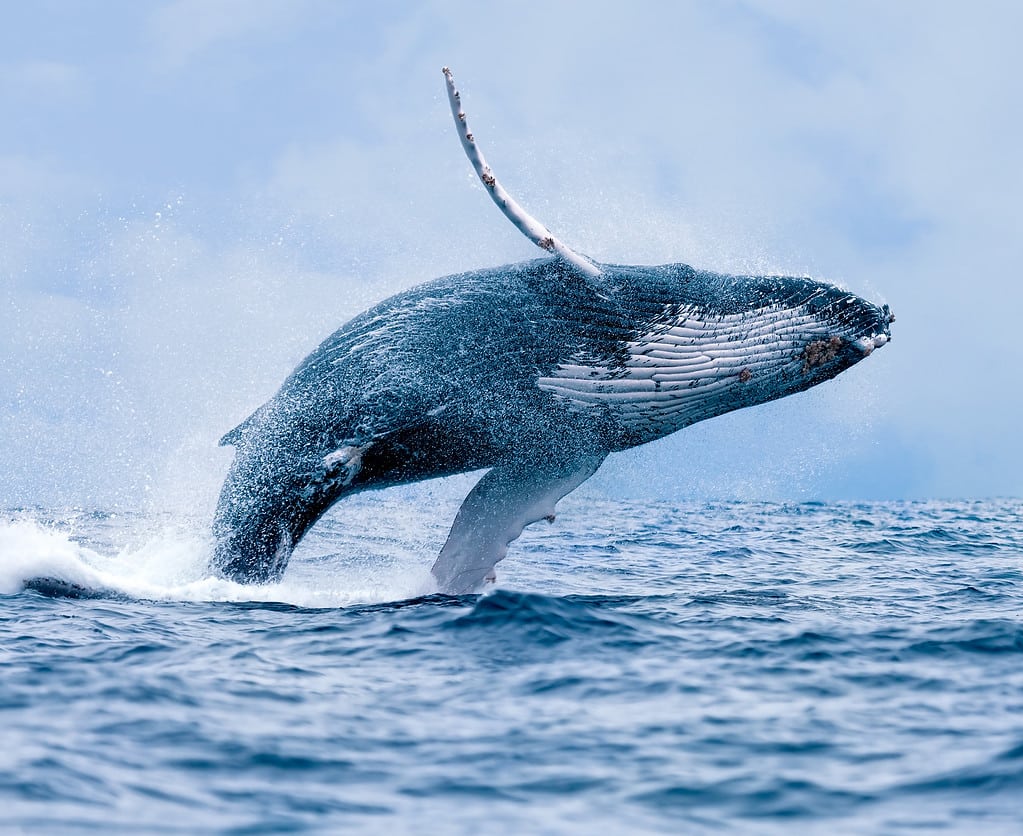
Humpback whale calves are large, sometimes weighing more than 1,500 pounds.
©PaulWolf/iStock via Getty Images
The most common type of whale found in Puerto Rico is the humpback whale. You can attend countless tours that take you close to these majestic creatures. Still, there is never a guarantee you’ll see one.
Humpback whales are members of the Balaenopteridae family. They are known for their incredible size. Humpback whales range from 46 to 56 feet long and can weigh as much as 44 short tons. Baby humpback whales, also known as calves, are born at around 14 feet long. These beautiful animals are known for their unique hunting methods. In groups, humpback whales blow bubbles, trapping fish to consume. Humpback whales creating bubble nets are fascinating to watch.
Killer Whales
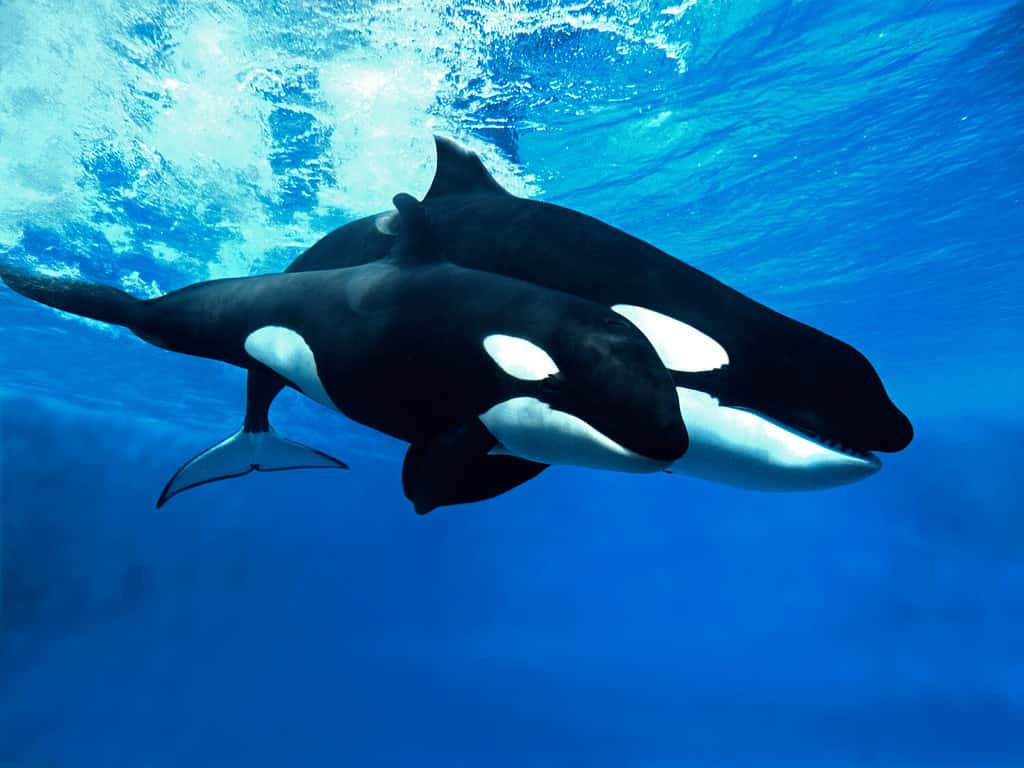
Orca whales are apex predators.
©slowmotiongli/Shutterstock.com
Most people don’t think of orcas when thinking about the tropical island of Puerto Rico. Still, they’ve been spotted around the island, although not in large numbers. Orca whales have also been spotted in Jamaica and St. Croix.
Orca whales are easy to identify. They are black and white-toothed whales and members of the Delphinidae family. These highly social animals live in large multi-generational groups. Males are larger than females, ranging from 20 to 26 feet long. Females are only around 16 to 23 feet long. Killer whales are fierce. They are apex predators that even feast on and scare great white sharks.
Minke Whales
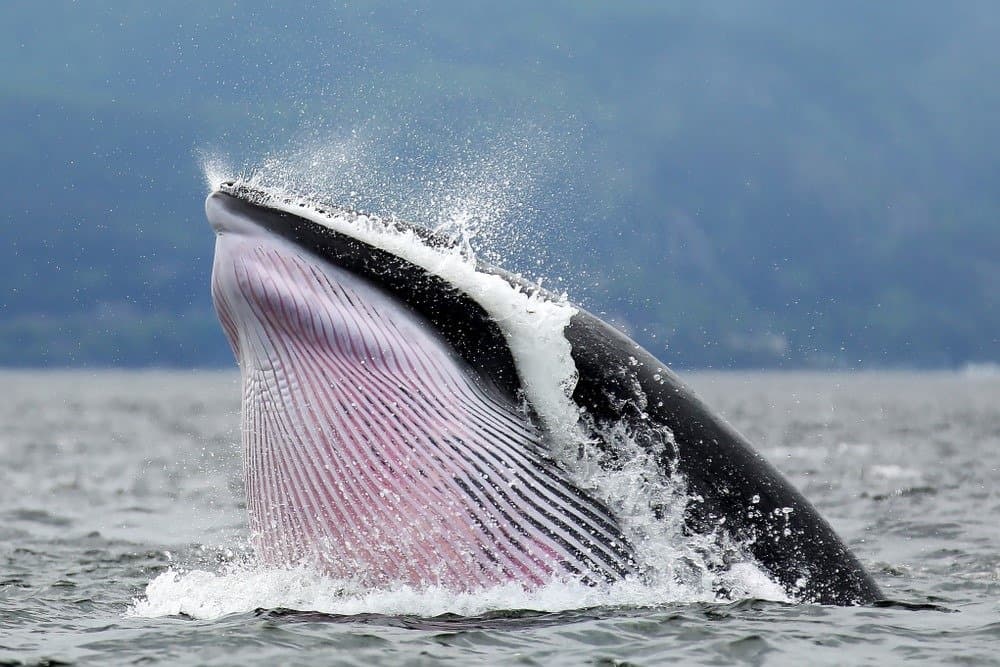
Minke whales have a wide range and distribution.
©Annie Leblanc/Shutterstock.com
Although slim, if you whale watch in Puerto Rico, you may catch a glimpse of the minke whale. Minke whales are easy to identify from their light pink undersides. They are also grey or purple. There are two species of minke whales: the common minke whale or northern minke whale and the Antarctic minke whale or southern minke whale.
Minke whales are the second smallest baleen whales. This is funny to think about, considering they reach about 27.4 feet long, although they can grow as long as 35 feet. Minke whales are filter feeders with a wide range. They are found all over the world. Minke whales live for about 50 years.
Short-finned Pilot Whales
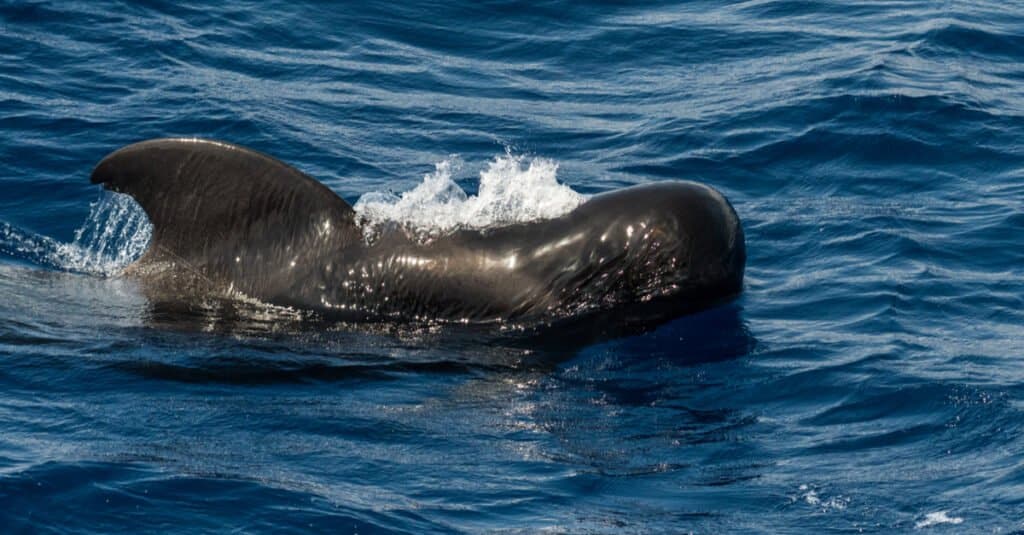
Some short-finned pilot whales have light-colored patches on their dorsal fins. They also have large bulbous heads.
©Marcos del Mazo/Shutterstock.com
Another animal you probably won’t see if you whale watch in Puerto Rico is the short-finned pilot whale. Still, if you’re lucky, you may catch a glance as they’ve been reported off the coast of Puerto Rico. An estimate of how many is hard to guess. However, these whales were previously commercially hunted in the Caribbean Sea during the 18th and 19th centuries.
Short-finned pilot whales are highly social animals with a wide range. There are at least 700,000 short-finned pilot whales in the wild. These whales are black to dark gray/brown and known for their roundish bulbous heads. Short-finned pilot whales are members of the Delphinidae family. They are around 10 to 24 feet long, depending on the region. Short-finned pilot whale calves weigh about 130 pounds when born.
The photo featured at the top of this post is © Irina Brester/iStock via Getty Images
Thank you for reading! Have some feedback for us? Contact the AZ Animals editorial team.



